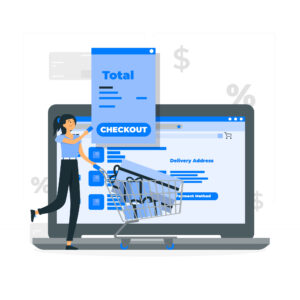As an e-commerce entrepreneur, you’ve successfully launched your Shopify store and achieved initial success. Now, you’re eager to take your business to the next level and scale it up. Scaling your Shopify business is a significant milestone, but it requires a well-thought-out strategy and the right tools. In this blog, we’ll explore the key steps and strategies for sustainable growth, with a focus on optimizing your Shopify store’s performance. We’ll also include external links to valuable resources to further guide you in your scaling journey.
1. Optimize Your Website for Speed and Performance
A slow website can lead to high bounce rates and lost sales. To scale your business, optimize your Shopify store’s speed and performance. Use tools like Google PageSpeed Insights and GTmetrix to identify areas for improvement. Compress images, leverage browser caching, and consider using a Content Delivery Network (CDN) for faster load times.
2. Expand Your Product Catalog
Diversifying your product range can attract a wider customer base and boost sales. Conduct market research to identify products that align with your niche and customer preferences. Use Shopify’s built-in tools to add new products, and consider dropshipping or print-on-demand services to quickly expand your catalog.
3. Implement a Content Marketing Strategy
Content marketing can drive organic traffic and engage your audience. Create high-quality, SEO-optimized blog posts, videos, and other content that resonate with your target market. Utilize Shopify apps like SEO Manager to improve your content’s visibility in search engines.
4. Invest in Paid Advertising
To accelerate growth, consider paid advertising on platforms like Google Ads and Facebook Ads. Set clear objectives, target your ads effectively, and monitor your campaigns closely. Tools like AdNabu and ROI Hunter can help you optimize your advertising efforts.
5. Streamline Inventory Management
Efficient inventory management is crucial as your business expands. Use inventory management apps like TradeGecko or Skubana to keep track of stock levels, automate order processing, and manage multichannel sales.
6. Enhance Customer Support
Scalability should not come at the expense of customer service. Invest in a helpdesk solution like Zendesk or Freshdesk to manage customer inquiries efficiently and maintain high-quality support.
7. Explore International Markets
Expanding to international markets can open up new opportunities. Use Shopify’s built-in features to handle multiple currencies and languages, and consider cross-border e-commerce platforms like Global-e for seamless international expansion.
8. Implement Conversion Rate Optimization (CRO)
Optimizing your conversion rate can significantly impact your revenue. A/B testing tools like Optimizely and Google Optimize can help you fine-tune your website to maximize conversions.
9. Monitor Analytics and KPIs
Use analytics tools like Google Analytics and Shopify’s built-in reports to track key performance indicators (KPIs) such as traffic, sales, and conversion rates. Regularly review these metrics to identify areas for improvement and adjust your strategy accordingly.
10. Build a Reliable Team
Scaling your business often requires additional support. Consider hiring skilled employees or outsourcing tasks to agencies or freelancers. Websites like Upwork and Freelancer can help you find talented professionals.
In conclusion, scaling your Shopify business is an exciting journey that requires careful planning, optimization, and a commitment to delivering value to your customers. By following these strategies and utilizing the external resources provided, you can navigate the path to sustainable growth and take your e-commerce venture to new heights.


